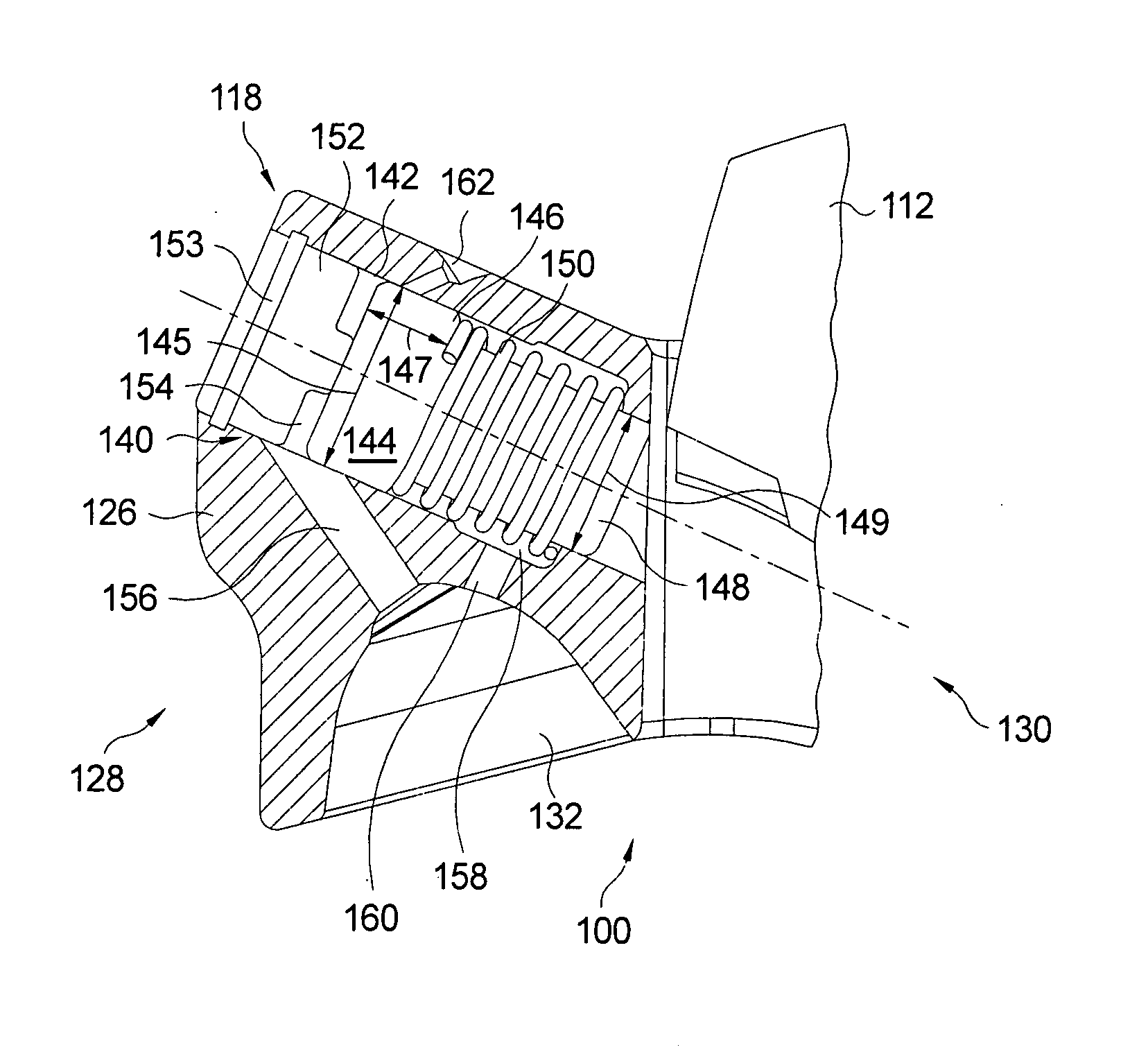Switchable rocker arm
a rocker arm and switch technology, which is applied in the direction of valve arrangements, mechanical equipment, machines/engines, etc., can solve the problems of inability to increase tolerances for minor diameter sizes, increase manufacturing costs, and increase the risk of locking pin head jamming in the bore, so as to reduce the net volume of oil displaced and reduce the required return spring force
- Summary
- Abstract
- Description
- Claims
- Application Information
AI Technical Summary
Benefits of technology
Problems solved by technology
Method used
Image
Examples
Embodiment Construction
[0021]The advantages and benefits afforded to a two-step roller finger follower (RFF) in accordance with the invention may be better appreciated by first considering a prior art two-step roller finger follower. Such a two-step RFF is suitable for use in a variable valve activation system of an internal combustion engine.
[0022]Referring to FIG. 1, the view shown represents a section cutaway along a vertical symmetry plane for description purpose such that only one-half of a prior art two-step roller finger follower (RFF) 10 is present. Thus, where appropriate, the described elements should be considered as having matching counterparts (not shown) in the full RFF. A high-lift follower 12 including a cam-follower surface 14 is disposed in a central opening 16 in a rocker arm 18. High-lift follower 12 pivots within opening 16 about a pivot shaft 20. A roller shaft 22 mounted in rocker arm 18 supports a roller 24 for following a low-lift lobe of an engine camshaft (not shown).
[0023]Rocke...
PUM
 Login to View More
Login to View More Abstract
Description
Claims
Application Information
 Login to View More
Login to View More - R&D
- Intellectual Property
- Life Sciences
- Materials
- Tech Scout
- Unparalleled Data Quality
- Higher Quality Content
- 60% Fewer Hallucinations
Browse by: Latest US Patents, China's latest patents, Technical Efficacy Thesaurus, Application Domain, Technology Topic, Popular Technical Reports.
© 2025 PatSnap. All rights reserved.Legal|Privacy policy|Modern Slavery Act Transparency Statement|Sitemap|About US| Contact US: help@patsnap.com



